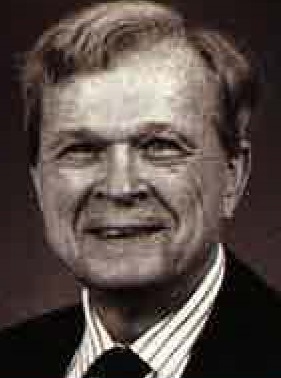
Gene Bahniuk, 81, binding safety guru
Mechanical engineering professor drove development of safety standards
Dr. Eugene Bahniuk, professor of engineering at Case-Western University, died May 24, 2007 at his home in Gates Mills, Ohio. He was 81.
Born in 1926 in West Virginia, Bahniuk grew up in Cleveland. After Army service in the Pacific in WWII, he worked for engineering firms while completing college and graduate school. He earned his PhD in mechanical engineering at Case-Western Reserve University in 1970, and taught there until his retirement in 1997.
Bahniuk held patents in jet engines, pumps, turbines, flow meters, engines, valves and automobile cruise control mechanism. At his death, he was developing a new rotary internal combustion engine. His two recreational passions were flying and skiing.
From 1970 to 1978, Bahniuk taught in the Ferdl Aster/Dick Bohr Ski Haus Ski School in the Cleveland area. Part of his research focused on the causes of broken hips among the elderly. At the urging of his colleague Dr. Victor Frankel, he began looking into ski safety issues, focusing on ski binding performance, and in 1971 this work was recognized by a prize from the US Ski Association and the American Academy of Orthopaedic Surgeons.
In April 1972 Bahniuk and 60 other interested parties from around the world (academic researchers, binding vendors, retailers and skiers) formed Subcommittee F08.14 of the American Society for Testing and Materials, with the purpose of developing standards for snow skiing equipment. By 1982 the group had grown, under Bahniuk's chairmanship, to become the full ASTM Committee F-27 on snow skiing. Bahniuk served as chairman or vice chairman of this committee until retiring in 1999. Beginning in 1973 he also served as head of the U.S. delegation to the International Standards Organization committee on skiing, TC83.
ASTM F27 was composed of a diverse, independent-minded group of people driven by their own interests. Binding, boot and ski manufacturers, ski area operators, retailers, orthopaedists, attorneys, insurance executives, government agents, consumers and academic researchers all had different ideas and often came into conflict. For instance, binding manufacturers generally wanted boot soles to be flat so that plates could be screwed to them in a reliable, stable manner, while some boot manufacturers wanted to be able to build lighter, flexible boot soles with stylish gaps between the toe and heel surfaces. Bahniuk, with his reputation for fair play and truthfulness, was able to prevent special interests from dominating the standards process. He helped the group to reach consensus in standards for ski shop practices, product specifications, definitions and test methods.
Bahniuk also led the committee's effort to coordinate their work with European standard-setting organizations.
A major contribution to the industry was Bahniuk's development of a ski binding performance tester. Before 1970, ski binding designers had no standard way to apply complex loads in a laboratory. Bahniuk invented a device that could apply simultaneous twisting and bending loads to the ski-binding-boot system, measuring loads going in and coming out. He determined that bindings available in the early '70s did not release safely in most simulated skiing situations. Binding factories began finding low friction and multi-directional solutions to the problems discovered through standardized testing on the Bahniuk machine.
Bahniuk did not patent either his performance tester or the anthropomorphic crash dummy he developed for binding test purposes. He placed both inventions in the public domain, and since his retirement the dummy has been used by the TuV laboratory in Munich to test binding performance in backward falls.
ASTM estimates that the work of Bahniuk's committees has saved American skiers about 50,000 lower leg injuries each year since the mid-70s. That's roughly 1.5 million legs over 30 years.
Bahniuk published over 20 papers on skiing safety, and was honored a dozen times by ASTM, USSA, the National Ski Retailers Association, and other organizations. In 2006 he was nominated to the U.S. National Ski Hall of Fame.
On a personal note, this writer met Gene Bahniuk in 1970, and worked with him for ten years on various ASTM committees. I worked for Dick Bohr at the Ski Haus from 1970 to 1972, when Dr. Bahniuk came in to have us mount up bindings for test purposes. He was a always cheerful, enthusiastic and diplomatic, especially when dealing with the difficult and often trying people who sat on his committees. --Seth Masia with Ray Panella

Add new comment